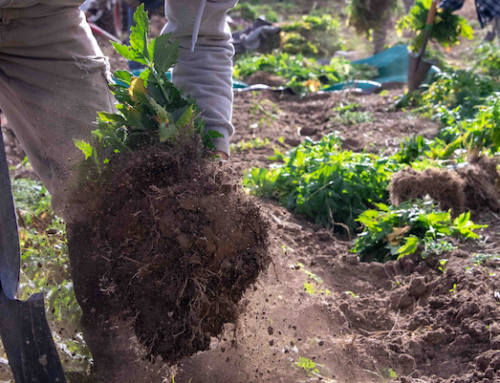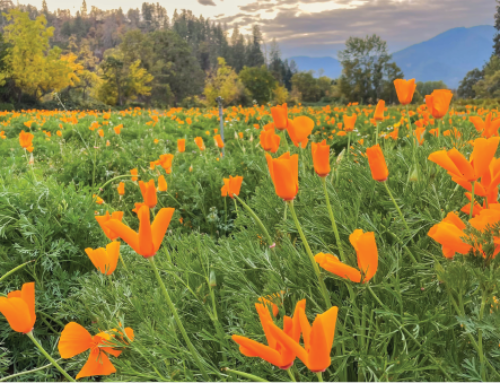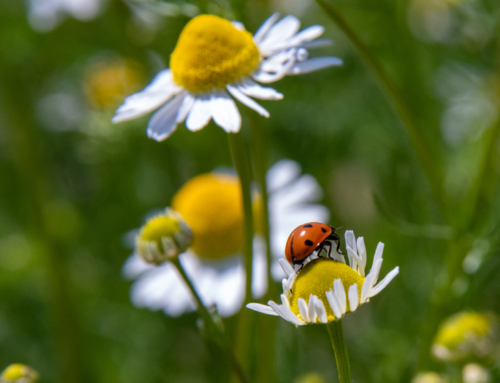Dirt On The Farm April 2024 – Crop Rotation On The Herb Farm
It is hard not to be excited on the farm this time of the year. Life is exploding at every turn. Seeds are germinating, perennial herbs are awakening from the winter slumber and pushing through the soil, and the trees are blossoming and unfurling their first chartreuse leaves. The geese have returned, or at least the nesting pairs, and the turkeys are gobbling along the field edges, the males with tails upturned displaying their ornate plumage to the ladies nearby. The night before last the first frogs began to sing, at first so quiet and distant, we questioned if it was our imagination, however, joined last night by an ever-growing chorus, the reality is undeniable. Spring is here.
Our crop plan has been developed, a matrix of space, place, time, and species. Families of plants dance through the field separated by time of the farmer’s choosing. Asteraceae, Lamiaceae, Apiaceae, Malvaceae, Boraginaceae, Allium, Rosaceae, Solanaceae, Fabaceae, and a dozen other smaller families of plants. Perennials, biennials, annuals; roots, herbaceous tops, flowers, seeds, fruit. The planning is a balance of fitting the right plant into the right space, limiting the amount of the same family grown next to each other, spreading the time between same crop families and crop types, and fitting in time for our fields to rest, reset, recover while growing nutrient rich cover crops and living green manures. It is an ever changing and evolving puzzle that is different every time you put it together. Some pieces stay put (perennial or biennial crops), others are moving, and at the end each piece needs to fit back into the puzzle in a new and unique way.
Of course, not all pieces fit in all places. Sometimes the rocks don’t allow us to plant a certain type of root crop, or the sun in one field is too much for a shade loving plant. Likewise, the afternoon winds we get in the early summer may batter down one species while helping another thrive and reach its truest potential. As farmers, we do our best to listen to each plant’s inner nature and also listen to the land’s needs. It is this delicate balance of place and time that is so critical to farming.
In the practice of crop rotation, we find a deep harmony with the rhythms of nature, fostering a farm ecosystem that thrives on diversity and renewal. By thoughtfully alternating crops, we cater to the soil’s complex needs, with each species playing a unique role in the nutrient cycle. Legumes, for instance, enrich the earth by fixing nitrogen, while other crops draw distinct minerals, maintaining soil health and vitality. This cycle of give-and-take disrupts the banquet set for pests and diseases, curtailing their cycles and preserving our crops. The natural variation in root systems and plant heights also enhances soil structure, preventing erosion and promoting water retention. Moreover, this diversity deters weeds, important for organic production, and supports an array of pollinators and beneficial insects, creating a resilient and productive agricultural tapestry. Through crop rotation, we not only yield bountiful harvests and safeguard our soil’s fertility and ecological balance, weaving sustainability into the very fabric of our farming practice. This is regenerative organic farming at its essence. Working with nature rather than against it. We are but stewards, thank you for supporting our efforts to leave a better planet for the next generation. By choosing regenerative organic sources for your food and medicine you are making a direct impact on our collective future, we commend you.





